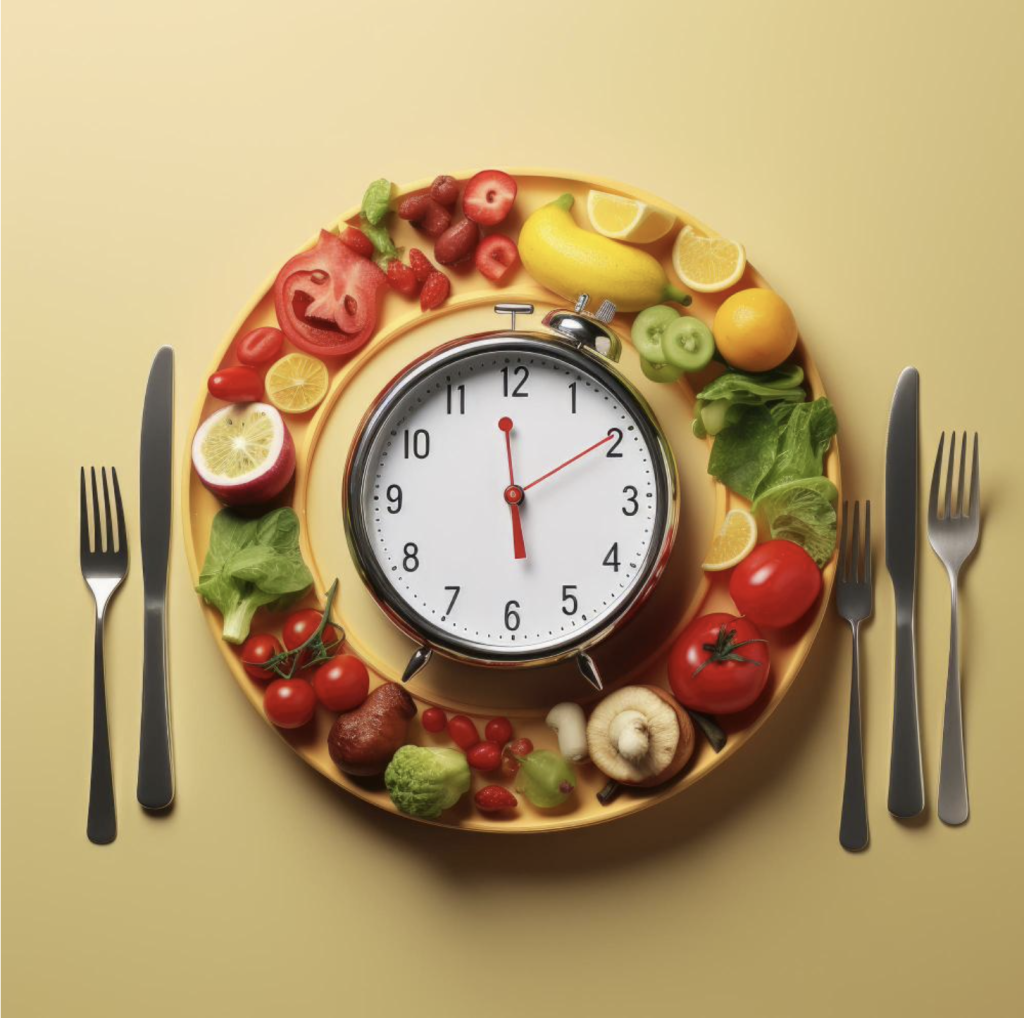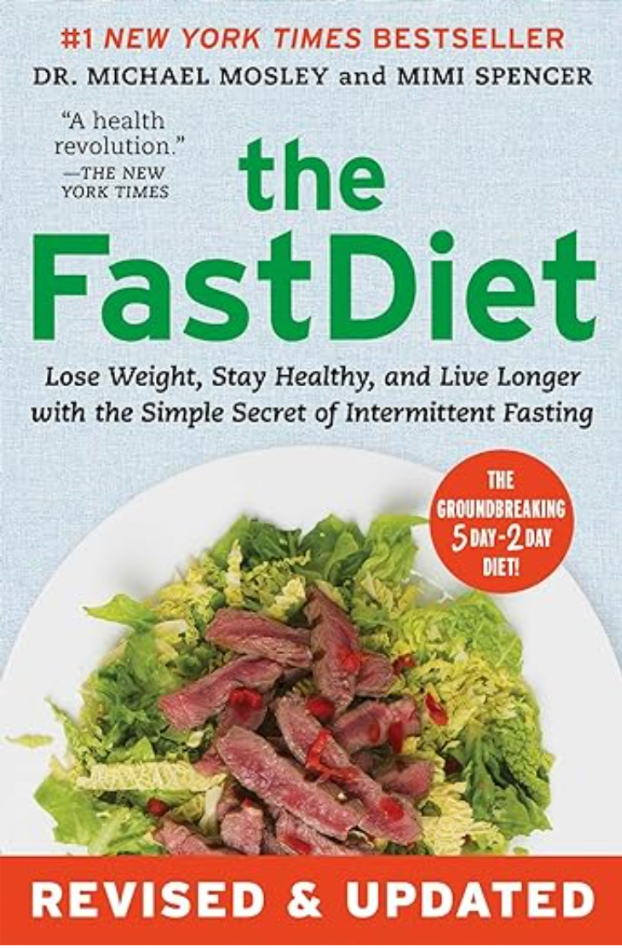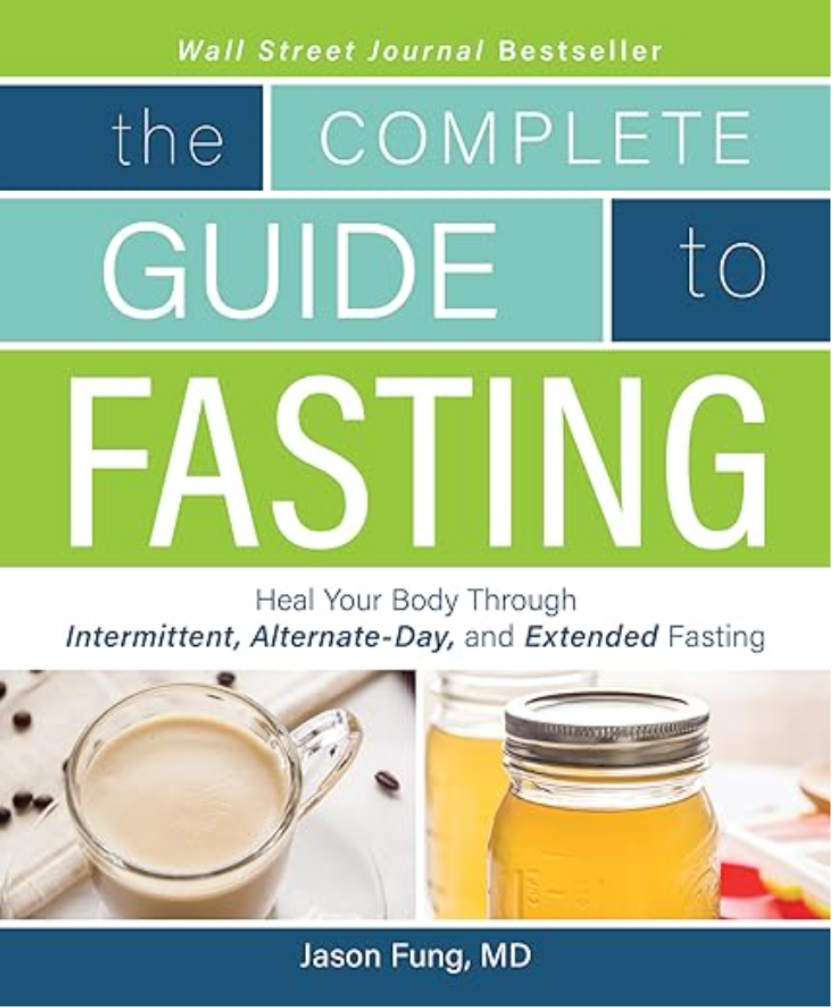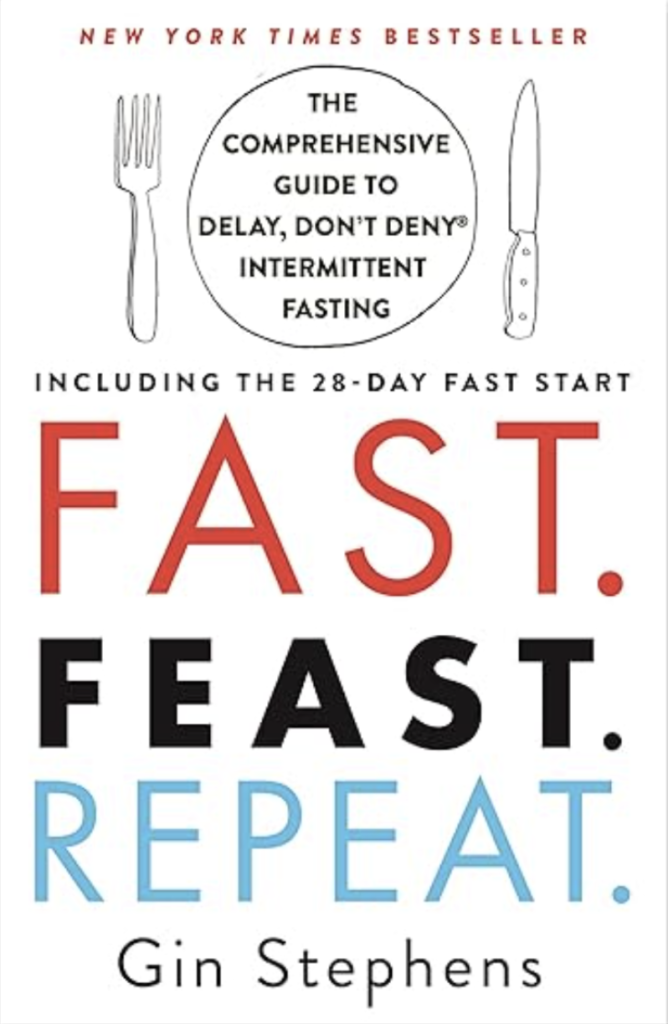
In the ever-evolving world of health and wellness, intermittent fasting has emerged as a powerful tool for weight management, improved metabolic health, and overall well-being. This practice, which involves alternating periods of eating and fasting, has gained tremendous popularity in recent years, backed by scientific research and countless success stories. However, the information available can be overwhelming for beginners embarking on this journey. That’s where the right books come into play – they serve as comprehensive guides, offering valuable insights, practical strategies, and the motivation to kickstart and sustain a successful intermittent fasting routine.
Intermittent fasting involves scheduled periods of voluntary abstinence from food. It allows the body to tap into energy-rich fat reserves while promoting various metabolic benefits. From weight loss to improved insulin sensitivity, increased energy levels to potential anti-ageing effects, the benefits of intermittent fasting are hard to ignore. However, as with any significant lifestyle change, it’s essential to approach intermittent fasting with a solid understanding of its principles and best practices.
In this article, we’ll explore five must-read books that will equip you with the knowledge and tools necessary to successfully navigate the world of intermittent fasting as a beginner. These books, written by renowned experts in the field, offer practical advice, scientific insights, and inspiring stories to help you confidently kickstart your fasting journey.
What is Intermittent Fasting (IF)?
Unlike traditional restrictive diets that focus on what you eat, IF is all about when you eat. It cycles between periods of eating and fasting, allowing your body to reap a multitude of benefits. Imagine it as giving your digestive system a well-deserved break while optimizing cellular repair and metabolic function.
Benefits of Intermittent Fasting for Beginners
Here’s why IF might be the perfect fit for your wellness goals:
- Weight Management: Studies suggest intermittent fasting (IF) can be as effective for weight loss as calorie restriction. Limiting your eating window causes you to naturally consume fewer calories, promoting a healthy calorie deficit.
- Enhanced Metabolic Health: IF can improve insulin sensitivity, leading to better blood sugar control. This is particularly beneficial for those at risk of or living with type 2 diabetes.
- Cellular Repair and Longevity: During the fasting window, your body enters autophagy, which cleans the house by removing damaged cells and promoting cellular renewal. This process may contribute to anti-aging effects.
- Improved Brain Function: Research indicates that IF can enhance cognitive function, memory, and focus.
- Reduced Inflammation: Chronic inflammation is linked to various health issues. IF has been shown to reduce inflammation markers in the body.
Who Should Consider Intermittent Fasting (and Who Shouldn’t)
While IF offers many benefits, it’s not a one-size-fits-all approach. Here’s a breakdown:
Good Candidates for IF:
- Generally healthy individuals looking to lose weight or improve metabolic health
- Those seeking a sustainable dietary approach
Consult a Doctor Before Starting IF if you have:
- Pre-existing medical conditions like diabetes, heart disease, or eating disorders
- Are you pregnant or breastfeeding
Understanding Different Intermittent Fasting Schedules:
There are various IF schedules, each with its benefits and challenges. Let’s explore some popular options:
- 16:8 Method: This involves restricting your eating window to 8 hours daily and fasting for the remaining 16 hours. A common approach is to skip breakfast and eat within an 8-hour window between noon and 8 pm.
- 5:2 Diet: This plan allows you to eat normally for 5 days of the week and restrict your calorie intake to 500-600 calories on 2 non-consecutive days.
- Eat Stop Eat: This method involves a 24-hour fast once or twice a week, with unrestricted eating on non-fasting days.
Choosing the Right Schedule for Your Lifestyle:
The best IF schedule is the one you can consistently follow. Consider your daily routine, energy levels, and social commitments. If you’re a busy professional, the 16:8 method might be ideal. If you prefer a structured approach with designated fasting days, the 5:2 diet could be a good fit.
Getting Started with Intermittent Fasting:
Now that you’re armed with the basics, here are some essential tips for beginners:
- Hydration is Key: Drink plenty of water throughout the day, especially during your fasting window. Aim for 8-10 glasses daily.
- Electrolytes are Your Friends: Replenish electrolytes like sodium, potassium, and magnesium, which can be lost during fasting. Consider a natural electrolyte supplement or include foods rich in these minerals in your eating window.
- Plan Your Meals: A healthy meal plan ensures you get the essential nutrients your body needs during your eating window. Focus on whole, unprocessed foods like fruits, vegetables, lean protein, and complex carbohydrates.
- Listen to Your Body: Notice When You’re Getting Hungry. If you feel starving during your fast, adjusting your schedule or breaking the fast with a small, healthy snack is okay.
Common Challenges and How to Overcome Them:
- Hunger Pangs: These are most common during the initial stages of IF. Stay hydrated, distract yourself with activities, and gradually increase your fasting window as your body adjusts.
- Social Pressures: Eating is often a social activity. Communicate your fasting goals to friends and family, and suggest alternative ways to socialize that don’t revolve around food.
- Low Energy Levels:* This can occur during the first few days of IF. Ensure you’re getting enough sleep, prioritize low-intensity exercise, and consider adding healthy fats like avocado or nuts to your meals for sustained energy.
Safety Considerations and When to Consult a Doctor:
While generally safe for healthy individuals, be mindful of these points:
- Start Slow and Listen to Your Body: Begin with shorter fasts and slowly extend them as your body adjusts to the routine.
- Listen to Your Body: If you experience dizziness, fatigue, or any discomfort that disrupts your daily life, break the fast and consult a doctor.
- Pre-existing Conditions: To ensure safety, consult your doctor before starting IF if you have any underlying health conditions.
Top 5 Books to Launch Your Intermittent Fasting Journey:
Now, let’s delve into the world of books that will be your trusted guides on your intermittent fasting adventure:
1) The FastDiet: Lose Weight, Stay Healthy, and Live Longer with the Simple Secret of Intermittent Fasting by Michael Mosley

Co-authored by Dr. Michael Mosley, the creator of the popular 5:2 intermittent fasting diet, and Mimi Spencer, a respected health journalist, “The Complete Book of Fasting” is a comprehensive guide to the various forms of fasting and their potential benefits.
This book stands out for its in-depth exploration of different fasting methods, such as time-restricted eating, alternate-day fasting, and extended fasting. Mosley and Spencer provide:
- A wealth of scientific evidence and research supports the efficacy of intermittent fasting for weight loss.
- Improved metabolic health.
- Potential anti-ageing effects.
One of the book’s strengths is its practical advice for incorporating fasting into daily life. The authors offer tips on meal planning, exercise routines, and strategies for overcoming common challenges, making it an invaluable resource for beginners navigating the fasting lifestyle.
2) The Complete Guide to Fasting: Heal Your Body Through Intermittent, Alternate-Day, and Extended Fasting by Dr. Jason Fung:

Dr. Fung, a leading nephrologist, dives deep into the science behind IF, explaining how it impacts your metabolism, hormones, and overall health. This book explores various fasting protocols, including alternate-day and extended fasting, making it a valuable resource for those seeking a more comprehensive understanding of IF.
3) Fast. Feast. Repeat.: The Comprehensive Guide to Delay, Don’t Deny® Intermittent Fasting–Including the 28-Day FAST Start by Gin Stephens

Gin Stephens, a certified nutrition coach, champions a flexible approach to IF. Her book emphasizes the concept of “Delay, Don’t Deny,” encouraging readers to listen to their bodies and adjust their fasting window based on their needs. The book includes a helpful 28-day plan to ease you into IF and tips for long-term success.
4) Intermittent Fasting For Dummies by Janet Bond Brill:

This user-friendly guide by Janet Bond Brill breaks down the complexities of IF into simple, understandable language. It tackles common myths and concerns associated with fasting, making it a perfect resource for those new to it. The book also includes meal plans and recipes to start your fasting journey.
5) Delay, Don’t Deny by Gin Stephens

Gin Stephens, an intermittent fasting expert and advocate, has written “Delay, Don’t Deny” as a practical guide for beginners looking to adopt this lifestyle. Focusing on sustainable practices and overcoming common challenges, this book offers a wealth of actionable advice and inspiring stories.
One of the standout features of this book is Stephens’ emphasis on developing a healthy relationship with food. She encourages readers to embrace the principles of intermittent fasting without feeling deprived or restricted. Her approach is centered on learning to “delay” eating rather than denying oneself entirely, making it a more achievable and enjoyable journey.
Stephens also addresses obstacles beginners may encounter, such as social situations, cravings, and lack of motivation. Through her personal experiences and those of others, she provides valuable strategies for staying on track and maintaining a positive mindset throughout the fasting journey.
Sample Intermittent Fasting Meal Plans:
1. 16:8 Method (Eating Window: 8 Hours, Fasting Window: 16 Hour)s
| Meal | Time | Sample Meal | Focus |
| Pre-Fasting (Optional) | 8:00 AM | Black coffee or green tea with lemon | Hydration |
| Breakfast | 10:00 AM | Scrambled eggs with spinach and whole-wheat toast | Protein & Fiber |
| Lunch | 1:00 PM | Lentil soup with a side salad and whole-wheat crackers | Fiber & Plant-Based Protein |
| Snack (Optional) | 4:00 PM | Handful of almonds and berries | Healthy Fats & Antioxidants |
| Dinner | 7:00 PM | Baked salmon with roasted vegetables and quinoa | Lean Protein & Complex Carbs |
2. 5:2 Diet (Eat Normally 5 Days, Restrict Calories on 2 Non-Consecutive Days)
Normal Eating Days (Examples):
| Meal | Time | Sample Meal | Focus |
| Breakfast | 8:00 AM | Oatmeal with protein powder and fruit | Protein & Fiber |
| Lunch | 12:00 PM | Chicken breast sandwich on whole-wheat bread with salad | Lean Protein & Complex Carbs |
| Dinner | 6:00 PM | Vegetarian chilli with a side of brown rice | Plant-Based Protein & Fiber |
| Snack (Optional) | Afternoon | Greek yoghurt with fruit and granola | Protein & Healthy Fats |
Restricted Calorie Days (Examples – Aim for 500-600 Calories):
| Meal | Time | Sample Meal | Focus |
| Breakfast | 10:00 AM | Vegetable smoothie with protein powder | Low Calorie & Nutrients |
| Lunch | 2:00 PM | Small salad with grilled chicken breast | Lean Protein & Vegetables |
| Dinner (Optional) | 6:00 PM | Vegetable soup with a small whole-wheat roll | Low Calorie & Fiber |
3. Eat Stop Eat (24-Hour Fast Once or Twice a Week) Fasting Day (Example):
● Focus on water, black coffee, or unsweetened tea throughout the 24-hour period.
● Consider breaking the fast the next day with a light, an easily digestible meal like vegetable soup or yoghurt with fruit.
Non-Fasting Days (Examples):
| Meal | Time | Sample Meal | Focus |
| Breakfast | 8:00 AM | Whole-wheat pancakes with fruit and nuts | Healthy Carbs & Protein |
| Lunch | 1:00 PM | Tuna salad sandwich on whole-wheat bread with a side salad | Lean Protein & Fiber |
| Dinner | 7:00 PM | Chicken stir-fry with brown rice and mixed vegetables | Balanced Meal with Protein, Carbs, & Vegetables |
| Snack (Optional) | Afternoon | Apple slices with almond butter | Healthy Fats & Fiber |
Conclusion:
Whether you’re looking to lose weight, improve your overall health, or explore the potential benefits of intermittent fasting, these books provide a solid foundation and equip you with the tools to successfully navigate this lifestyle change.
Remember, intermittent fasting is not a one-size-fits-all approach, and it’s essential to approach it with the right mindset, patience, and a willingness to adapt to your unique needs and circumstances. By arming yourself with the knowledge and strategies in these top books, you’ll be well-prepared to embark on a rewarding and potentially life-changing journey toward better health and well-being.
For an alternative approach to health and wellness, you can also explore the benefits of a Keto Diet here.
